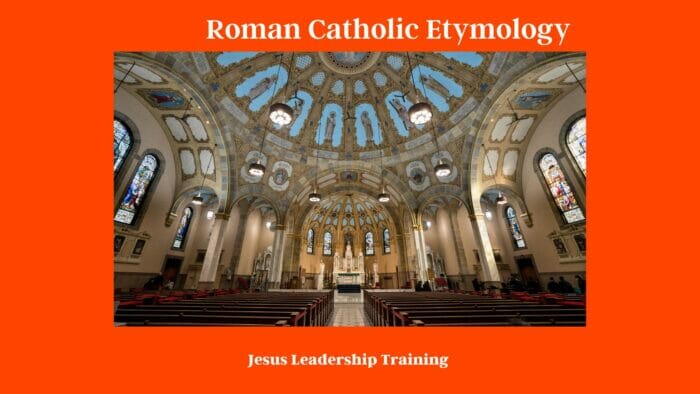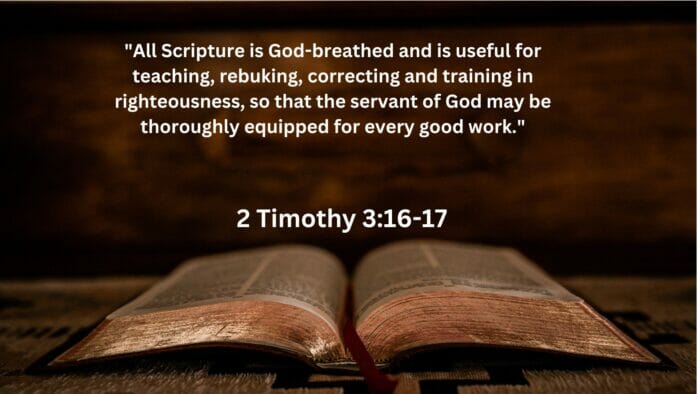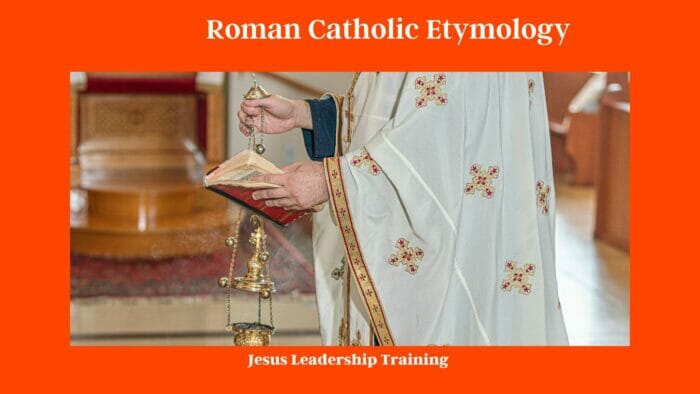Explore the fascinating world of Roman Catholic etymology in this comprehensive article. Learn about its biblical origins, historical development, and present-day practices. Discover the distinctions between Roman Catholicism and Christianity, delve into the core beliefs, and understand the rules that guide this ancient faith. Gain valuable insights from authoritative sources and personal experiences, presented in an engaging and informative manner.
Welcome to a captivating journey into the realm of Roman Catholic etymology. In this article, we will delve into the origins, history, beliefs, and rules of one of the oldest and most influential religious traditions in the world. Roman Catholicism, with its rich tapestry of doctrines and practices, has shaped civilizations, influenced art, and left an indelible mark on human history.
Table of Contents
What is Roman Catholic Etymology?
Roman Catholic etymology refers to the study of the historical development and linguistic origins of the term “Roman Catholic.” Understanding the roots of this title is crucial to comprehending the faith and its significance. Let’s embark on a thought-provoking exploration to uncover the essence of this term.

Biblical Definition of Roman Catholic Etymology
Origin
The term “Roman Catholic” finds its roots in the ancient Christian Church and can be traced back to the early centuries of Christianity. Its origin lies in the Latin phrase “Ecclesia Catholica Romana,” which translates to “the Roman Catholic Church.” The Church in Rome played a central role in early Christian history, and its influence gradually expanded beyond the city’s borders.

History
The history of Roman Catholicism is intricately woven with the history of Christianity itself. From the establishment of the early Christian communities to the Great Schism of 1054, which led to the separation of the Roman Catholic Church and the Eastern Orthodox Church, the faith has evolved through triumphs and challenges.
Today
In the modern era, Roman Catholicism has grown into a global religious force with over a billion adherents. It continues to evolve while upholding its ancient traditions and core beliefs. Today, the Roman Catholic Church is led by the Pope, serving as a spiritual guide to millions of followers worldwide.

Is Roman Catholicism the Same as Christianity?
The relationship between Roman Catholicism and Christianity often sparks questions and debates. Let’s explore the distinctions and commonalities between these two significant religious entities.
Beginning
Christianity is the broader term encompassing various denominations, including Roman Catholicism. Roman Catholicism is a branch of Christianity that traces its roots back to the teachings of Jesus Christ and the apostles. It has its unique traditions and doctrines that distinguish it from other Christian denominations.
Divisions
Christianity is divided into several major branches, including Roman Catholicism, Eastern Orthodoxy, and Protestantism. While they share a common belief in Jesus Christ, each branch has distinct practices and interpretations of Scripture. Roman Catholicism stands out with its emphasis on the Pope’s authority and sacramental theology.
Today
Today, Roman Catholicism remains one of the largest Christian denominations worldwide. It plays a crucial role in promoting social justice, addressing global issues, and offering spiritual guidance to millions of believers.

Roman Catholic Beliefs
Central to Roman Catholicism are its core beliefs that shape the faith and its followers. Let’s explore some of the fundamental tenets that guide the lives of Roman Catholics.
Marriage
Marriage is considered a sacred covenant in Roman Catholicism. It is viewed as a union between one man and one woman, intended for procreation and mutual support. The sacrament of marriage holds profound spiritual significance, uniting couples in the eyes of God and the Church.
God
The belief in one God, the Holy Trinity, lies at the heart of Roman Catholic theology. God is seen as three divine persons—Father, Son (Jesus Christ), and Holy Spirit—coexisting in perfect unity and harmony.
Death
Roman Catholics believe in the afterlife and the resurrection of the dead. Death is not the end but a transition to eternity. The Church provides spiritual support and funeral rites to help believers navigate the journey of grief.
Mary
Mary, the mother of Jesus, holds a special place in Roman Catholic devotion. She is venerated as the Mother of God and is believed to intercede for humanity’s needs. Devotion to Mary plays a significant role in the spiritual life of Roman Catholics.
Purgatory
Purgatory is a belief unique to Roman Catholicism. It is seen as a temporary state of purification after death for souls destined for heaven. The concept of purgatory emphasizes the importance of repentance and spiritual growth.
Baptism
Baptism is one of the seven sacraments of Roman Catholicism. It is considered the gateway to a life of faith and membership in the Church. Through baptism, believers are cleansed of original sin and welcomed into the Christian community.
Roman Catholic Rules
The Roman Catholic Church follows a set of rules and guidelines that govern various aspects of believers’ lives. Let’s explore some of these rules in detail.
Marriage
Roman Catholic marriages are governed by Canon Law, which outlines the requirements for a valid union. The Church emphasizes the indissolubility of marriage and provides guidance for annulments in exceptional cases.
Cremation
The Roman Catholic Church allows cremation, provided it is not chosen for reasons contrary to Christian beliefs. The ashes are to be treated with respect and may be buried in a cemetery or placed in a columbarium.
Lent
Lent is a significant liturgical season in Roman Catholicism. It is a period of forty days of fasting, prayer, and almsgiving leading up to Easter. Lent provides an opportunity for believers to grow spiritually and prepare for the resurrection of Jesus Christ.
Good Friday
Good Friday is a solemn day of commemoration in the Roman Catholic calendar. It marks the crucifixion of Jesus Christ and is observed with prayer, fasting, and the veneration of the cross.
Birth Control
The Roman Catholic Church teaches that artificial birth control methods are against its moral teachings. Instead, it advocates for natural family planning methods based on periodic abstinence.
Frequently Asked Questions (FAQ) on the Roman Catholic Church
- What is the Roman Catholic Church?
The Roman Catholic Church is the largest Christian denomination, comprising millions of followers worldwide. It traces its origins back to the teachings of Jesus Christ and the apostles. It is governed by the Pope, who is considered the spiritual leader and head of the Church, and is headquartered in Vatican City. - What are the core beliefs of the Roman Catholic Church?
The Roman Catholic Church upholds central doctrines such as the belief in the Holy Trinity (Father, Son, and Holy Spirit), the divinity of Jesus Christ, the importance of the Bible, the concept of original sin, and the promise of eternal life through faith and good works. - What role does the Pope play in the Roman Catholic Church?
The Pope serves as the Bishop of Rome and the supreme authority within the Catholic Church. He is believed to be the successor of Saint Peter, the apostle appointed by Jesus to lead the Church. The Pope’s role includes interpreting scripture, resolving theological disputes, and guiding the faithful in matters of faith and morals. - What is the significance of the Vatican City in Catholicism?
Vatican City is the spiritual and administrative center of the Roman Catholic Church. It is the smallest independent state globally, serving as the residence of the Pope and the location of various crucial institutions, including the Apostolic Palace, St. Peter’s Basilica, and the Roman Curia. - What are the Seven Sacraments of the Roman Catholic Church?
The Seven Sacraments are Baptism, Eucharist (Holy Communion), Confirmation, Reconciliation (Confession), Anointing of the Sick, Holy Orders (ordination of clergy), and Matrimony (marriage). Catholics believe these sacraments convey divine grace, fostering spiritual growth and strengthening their relationship with God. - How does the Roman Catholic Church view Mary, the mother of Jesus?
Catholics hold Mary in high esteem and consider her the Mother of God (Theotokos). They believe she was conceived without original sin (Immaculate Conception) and remained a virgin throughout her life (Perpetual Virginity). Devotion to Mary is widespread, and she is often seen as an intercessor and a model of faith. - What is the Catholic Church’s stance on social issues?
The Catholic Church advocates for the dignity and sanctity of human life from conception to natural death, opposing abortion, euthanasia, and other practices that violate this principle. It emphasizes social justice, promoting peace, helping the poor, and addressing issues such as poverty, immigration, and environmental concerns. - Does the Roman Catholic Church believe in the concept of Purgatory?
Yes, the Catholic Church teaches the existence of Purgatory, a state or place where souls undergo purification before entering Heaven. It is believed that those who die in a state of grace but with unresolved venial sins or temporal punishments for forgiven sins may undergo this purification process. - How is the Roman Catholic Church structured at the local level?
At the local level, the Roman Catholic Church is organized into parishes, with each parish being overseen by a priest. Several parishes are grouped together to form a diocese, led by a bishop. Bishops in major cities may be referred to as archbishops, and the Pope oversees all dioceses as the head of the universal Church. - Does the Roman Catholic Church promote ecumenism and interfaith dialogue?
Yes, the Catholic Church emphasizes ecumenism, which seeks to foster unity and cooperation among different Christian denominations. Additionally, the Church engages in interfaith dialogue, aiming to build bridges of understanding and promote peace among various religious traditions while still affirming its unique beliefs.
Final Thoughts
In conclusion, Roman Catholic etymology unravels the captivating history and beliefs of one of the world’s oldest religious traditions. From its biblical origins to its present-day practices, Roman Catholicism continues to inspire millions with its profound spirituality and rich cultural heritage. Understanding the distinctions between Roman Catholicism and Christianity provides valuable insights into the diverse tapestry of human faith.
As we journey through the annals of history and dive into the depths of theology, we encounter the enduring influence of Roman Catholicism on civilization, art, and the human spirit. Whether you are a devout Roman Catholic, a curious seeker, or a student of religious studies, exploring the etymology of this venerable faith opens a doorway to a world of wonder and wisdom.




